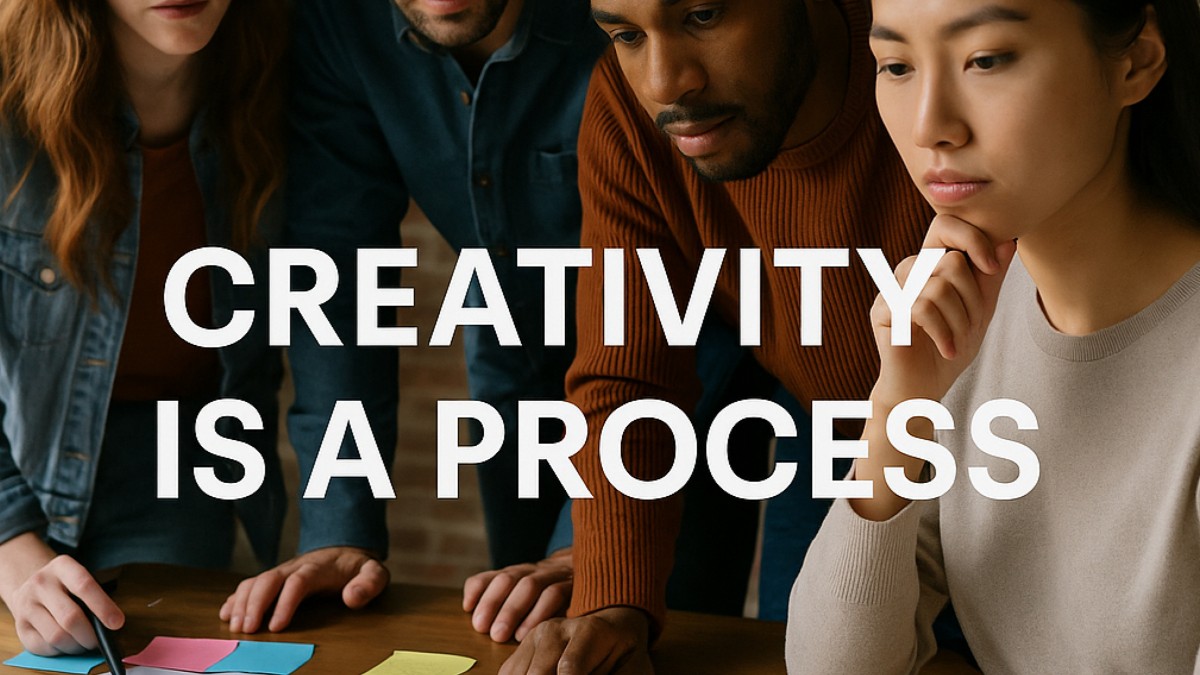Day 95 of The 100 Day Project - Creativity Is a Process

Unlock your creativity with Tina Seelig’s actionable guide to imagination, motivation, experimentation, and innovation.
In Creativity Rules: Get Ideas Out of Your Head and Into the World, Stanford professor Tina Seelig offers a powerful framework that makes creativity accessible and actionable. Her core message is clear. Creativity is not an innate gift possessed by a lucky few. It is a discipline that begins with imagination and is powered by curiosity, motivation, and persistence.
Step One: Engage Your Curiosity
Seelig emphasizes that creativity begins not with a flash of brilliance. But with a deep engagement in the world. Too often we look without seeing and listen without hearing. True engagement requires attention to detail and a willingness to ask questions. Seelig reminds us that “discovery is predicated on curiosity.” The more curious you are, the more you'll naturally explore and build your knowledge base, laying the foundation for imaginative thinking.
Imagination grows through exposure and experience. The more you immerse yourself in diverse ideas, environments, and problems, the more imaginative your thinking becomes. When you ask thoughtful questions and seek your own answers, you not only build confidence, but also develop the tools to envision new possibilities.
Step Two: Visualize Your Future—and the Obstacles
A core theme in Creativity Rules is that the vision you hold for yourself shapes your outcomes. Whether modest or monumental, your imagined future defines the limits of what you believe is possible. But Seelig takes this a step further. She encourages you to not only visualize the goal but also the obstacles you’ll encounter. By doing so, you are better prepared to overcome them.
Visualization combined with awareness of potential setbacks leads to what Seelig calls “pre-mortems”. It is a practice of imagining what might go wrong in advance, so you can design around it. This foresight is an essential creativity tool that helps transform imagined futures into practical, achievable outcomes.
Step Three: Motivation Fuels Experimentation
Creativity isn’t just about dreaming. It’s about doing. And to do that, you need motivation. Drawing on Daniel Pink’s work, Seelig outlines three key drivers: autonomy, mastery, and purpose. Autonomy gives you the freedom to explore; mastery challenges you to grow; and purpose connects you to something larger than yourself.
When motivation is present, it propels experimentation. And experimentation is at the heart of creativity. It’s through prototyping, testing, and refining that ideas evolve into innovative solutions. You don’t need the perfect idea upfront. You need the resilience to try, fail, and try again.
Step Four: Choose Opportunities with Intention
With many ideas and paths to choose from, how do you decide where to focus? Seelig offers a decision-making process that includes clarifying your goals, understanding time commitments, projecting into the future, and seeking external input. She encourages readers to be mindful and trust that opportunities are not finite. You can say no now and still find great possibilities later.
This approach helps filter distractions and allows you to align your energy with opportunities that truly matter to you. Ones that match your purpose and potential.
Step Five: Reframe Challenges and Unlock Innovation
Seelig illustrates the power of reframing by showing how shifting your perspective opens the door to new insights. Most people react to challenges with fixed mental frames shaped by their experiences and beliefs. But by deliberately questioning assumptions, even coming up with the “stupidest” solution possible, you can unleash a flood of creativity.
Reframing is a habit of mind that supports both adaptability and innovation. It helps you evolve your ideas and respond creatively to new challenges.
Step Six: Inspire Others to Join You
Creativity reaches its full potential when it inspires collective action. As Seelig points out, entrepreneurs and change makers must tell compelling stories to attract support. The story you tell shapes the world’s perception of your ideas and influences whether others will come alongside you.
She outlines a classic story arc (“Once upon a time… Until finally…”) that anyone can use to craft a resonant narrative. Combine that with influence principles from Robert Cialdini (reciprocity, social proof, scarcity, etc.), and you have a toolkit for contagious ideas.
Inspiration also stems from presence, warmth, and power, key components of charisma. These aren’t traits you’re born with. They're skills you can practice to become a more effective communicator and leader.
Final Takeaway: Creativity Is Built, Not Born
Creativity Rules reminds you that imagination, experimentation, reframing, and storytelling are all learnable skills. With the right mindset and structure, anyone can move ideas from their head into the world. Whether you're designing a product, launching a venture, or simply looking to live more fully, the creative process begins with asking a curious question and continues with a commitment to shape something new.
If you're ready to build your creativity muscle and lead with imagination, Creativity Rules is your blueprint.
📚 Want to turn reading into leadership?
👉 Join AOLLA: AOLLA.info
If you want access to my Bookish Notes, please consider joining my membership site, the Art of Learning.
This post contains affiliate links and The Invisible Mentor® may earn commissions for purchases made through links in this post. For more details, see here.
Categories: : creativity and innovation, practical leadership strategies, and personal growth through experimentation
 Avil Beckford
Avil Beckford 